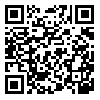Volume 24, Issue 3 (2020)
MJSP 2020, 24(3): 1-25 |
Back to browse issues page
Download citation:
BibTeX | RIS | EndNote | Medlars | ProCite | Reference Manager | RefWorks
Send citation to:



BibTeX | RIS | EndNote | Medlars | ProCite | Reference Manager | RefWorks
Send citation to:
Khosravi Kazazi A, Hosseinali F. Evaluating the Capability of Volunteered Geographic Information to Create a 3D City Perspective. MJSP 2020; 24 (3) :1-25
URL: http://hsmsp.modares.ac.ir/article-21-33754-en.html
URL: http://hsmsp.modares.ac.ir/article-21-33754-en.html
1- Department of Surveying Engineering, Faculty of Civil Engineering, Shahid Rajaee Teacher Training University
2- Department of Surveying Engineering, Faculty of Civil Engineering, Shahid Rajaee Teacher Training University , frdhal@gmail.com
2- Department of Surveying Engineering, Faculty of Civil Engineering, Shahid Rajaee Teacher Training University , frdhal@gmail.com
Abstract: (2310 Views)
Introduction
World population growth increases the importance of 3D city models because these models make some essential spatial analysis (such as visualization, navigation, emergency responses, disaster management and urban planning) possible or at least easier. 3D city models which were created based on common standards like CityGML are almost general comprehensive. However, quality, capability and precision of 3D city models depend on their input data. Traditional and commercial 3D data capturing methods that meet quality criteria are expensive and time-consuming. Technologic developments and new internet-based tools have provided a platform to capture spatial data byparticipate participation of public and volunteers. These participations are known as Volunteered Geographic Information (VGI). VGI is strongly welcomed by researchers and developers, as today's multiple projects such as OpenStreetMap not only work with two-dimensional data, but also capture 3D data produced by the volunteers.
Methodology
In this research the goal is using VGI to collect the required data for 3D city modeling based on the well-known CityGML standard. Thus, a mobile application connected to a server was developed. We used image processing algorithms such as SIFT, Canny and RANAC for image matching, edge detection and vanishing point recognition respectively. Images were transformed to ground coordinate system. Finally, acquired textures via VGIare were assigned to 3D model.
Results and discussion
In order to evaluate the proposed method, 3D model of a building in Shahid Rajaee University (as the most important part of a 3D city model by VGI) was created. The building height was calculated 53.34 meters. For elevation accuracy control, the building height was measured by ground-based operations. The building height based on this method was 34.44 meters. According to the definedthe level of details on the CityGML standard, the required precision to create a 3D model in the fourth level of details is 20 cm. So, details can be obtained through volunteered information and images into the 3D model of building with the fourth level of details.
Conclusion
Based on the results obtained by the proposed method, the calculated building height is only 9 cm different with the exact height of the building obtained through the surveying operation. This difference is less than 20 centimeters, that is the required accuracy for fourth level of detail in 3D modeling. This suggests that through the proposed method, the 3D model of the building could be achieved through VGI at the fourth level of details. In addition to being an affordable method for creating a 3D city model, using VGI is a fast way to collect various information. In further studies, it is proposed to use machine learning and deep learning techniques to automate the process of creating a 3D model from volunteered geographic information in order to complete and develop this approach.
World population growth increases the importance of 3D city models because these models make some essential spatial analysis (such as visualization, navigation, emergency responses, disaster management and urban planning) possible or at least easier. 3D city models which were created based on common standards like CityGML are almost general comprehensive. However, quality, capability and precision of 3D city models depend on their input data. Traditional and commercial 3D data capturing methods that meet quality criteria are expensive and time-consuming. Technologic developments and new internet-based tools have provided a platform to capture spatial data by
Methodology
In this research the goal is using VGI to collect the required data for 3D city modeling based on the well-known CityGML standard. Thus, a mobile application connected to a server was developed. We used image processing algorithms such as SIFT, Canny and RANAC for image matching, edge detection and vanishing point recognition respectively. Images were transformed to ground coordinate system. Finally, acquired textures via VGI
Results and discussion
In order to evaluate the proposed method, 3D model of a building in Shahid Rajaee University (as the most important part of a 3D city model by VGI) was created. The building height was calculated 53.34 meters. For elevation accuracy control, the building height was measured by ground-based operations. The building height based on this method was 34.44 meters. According to the defined
Conclusion
Based on the results obtained by the proposed method, the calculated building height is only 9 cm different with the exact height of the building obtained through the surveying operation. This difference is less than 20 centimeters, that is the required accuracy for fourth level of detail in 3D modeling. This suggests that through the proposed method, the 3D model of the building could be achieved through VGI at the fourth level of details. In addition to being an affordable method for creating a 3D city model, using VGI is a fast way to collect various information. In further studies, it is proposed to use machine learning and deep learning techniques to automate the process of creating a 3D model from volunteered geographic information in order to complete and develop this approach.
Article Type: Original Research |
Subject:
planning models,techniques and methods
Received: 2019/06/11 | Accepted: 2020/07/7 | Published: 2020/10/1
Received: 2019/06/11 | Accepted: 2020/07/7 | Published: 2020/10/1
Send email to the article author
| Rights and permissions | |
 |
This work is licensed under a Creative Commons Attribution-NonCommercial 4.0 International License. |








